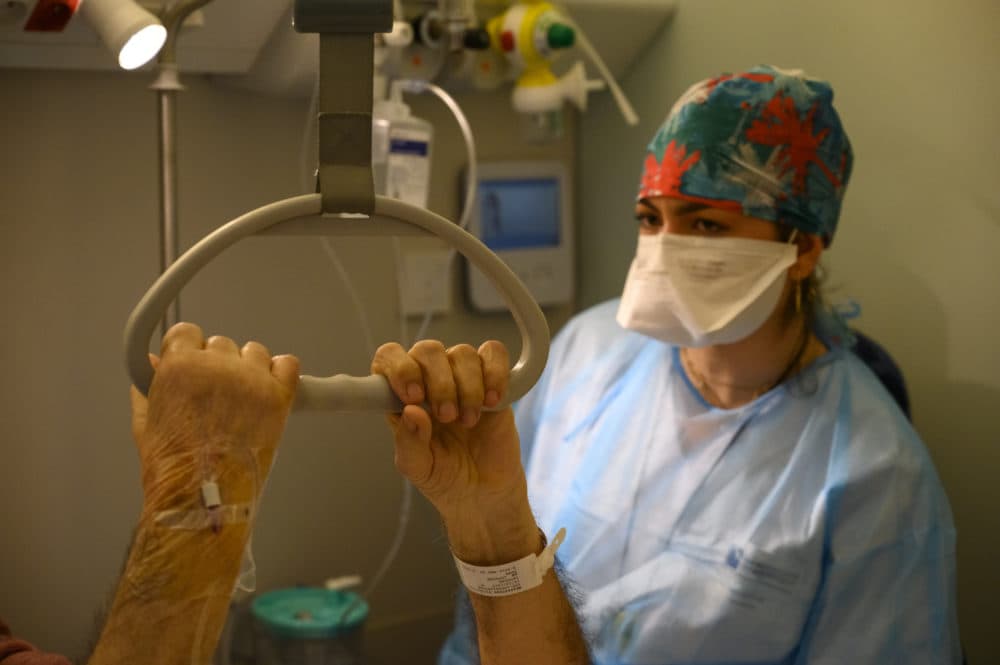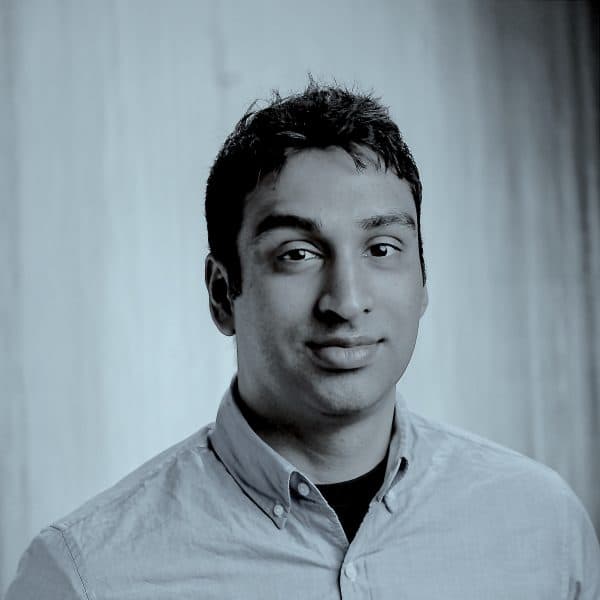Advertisement
Commentary
'The Hospital Is A Lonely Place': Comforting COVID Patients In Their Own Language

In Cantonese, "take a deep breath," roughly translates into the English sounds "sam fu kap."
In Mandarin, it's "shēn xī yī kǒuqì."
I speak neither Cantonese nor Mandarin. But I work at Tufts Medical Center, a hospital in the heart of Boston's Chinatown. These are two phrases I've begun to recognize in the midst of the COVID-19 pandemic. Although I'm a gastroenterologist, I've been called, like many physicians, to provide back-up medical care for patients with COVID-19. The challenges of dealing with this novel disease are compounded further by language barriers.
The hospital is a lonely place these days, and even more so if you don't speak English. Though we do everything we can to communicate with our patients, there is no substitute for being comforted by someone who speaks the language that you hold close to your heart. Due to valid restrictions on family visitation during the pandemic, many non-English speaking patients sick with the virus no longer have parents or siblings at their bedside to support them.
The hospital is a lonely place these days, and even more so if you don't speak English.
Of course, we try to cross such gulfs in language with interpreters. I've always considered medical interpretation a romantic profession — like war medicine — peripheral to the action, but just as necessary. The interpreters are attentive, well-versed in two or even more languages, familiar with arcane surgical terms and the pharmacopeia, adept at swiftly moving between different cadences and vocabularies, somehow able to keep who is speaking which language straight. If they are very good, I don't even notice they are there at all. My words pass through them like a prism.
Recently, I saw an old woman, in her 80s, from Vietnam. She was sick with COVID-19. When we entered her dark room, she was struggling with her mask. We asked her questions through an interpreter. We asked, "Do you feel short of breath?" We asked, "Are you having chills?" We stood 10 feet away, our own N95s and face shields covering our mouths, covering our eyes, making the distance between us feel even greater.
Advertisement
Gulfs exist, even in English. I took care of a young African American university student whose oxygen levels had dropped at home. Her COVID-19 test came back positive. She told me how she had traveled widely during the course of her education — to Tanzania, to Europe. She was interested in anthropology, the practice of understanding the gaps and bridges that can divide or link different cultures. Over a couple of days, her oxygenation numbers improved. When it came time to discharge her, her mother called me, upset. "Are you absolutely sure," she asked me in English, "she's OK to come home?"
'I'm scared,' she told me, 'that my daughter's going to come home and die.'
Her mother told me about the long history of mistreatment of Black people in American hospitals, the distrust sown by the actions of doctors at the expense of Black patients. That era, she reminded me, had not ended with COVID-19. Black people are three times as likely to be hospitalized, and twice as likely to die of the virus than white people. I assured the patient's mother that her daughter was safe to return home, but I could hear the echo of the chasm between us. "I'm scared," she told me, "that my daughter's going to come home and die."
Recently, I was asked to make an informative public health video to help encourage vaccine uptake in the U.S. Indian community. The catch was the video would be in Marathi — the first language I had learned as a little boy, but one whose subtleties and tenses had eroded from my memory as I grew up in the U.S. I still spoke the language with my close family, a curious mix of Marathi and English, usually to express familiar and domestic notions, like: "Mom, I'm hungry," or "What time is it?" or "When will I see you next?"
I don't know the word for "vaccine" or "protein" in Marathi. I called my mom this weekend to get her help translating the video script. She lives in California now, and we stayed on a WhatsApp video call examining each word, figuring out every subjunctive and verb agreement. I had never thought of my language this way. I never thought of it as a way to express science, or to explain the concept of "immunity." But to my surprise, all of those words existed in Marathi, as they do in Cantonese, and Mandarin, and Vietnamese and Cape Verdean, and all the hundreds of languages and dialects that are being spoken in hospitals across the country, and in the very hospital where I work.
The virus is good at separating us, at putting us in the dark. The hospital may have become a lonely place. But we have been saying, "Take a deep breath," in every possible dialect, in every possible language, hoping that our words might reach each other, as if we have grown up in the same place, in a similar time, in each other's family.
